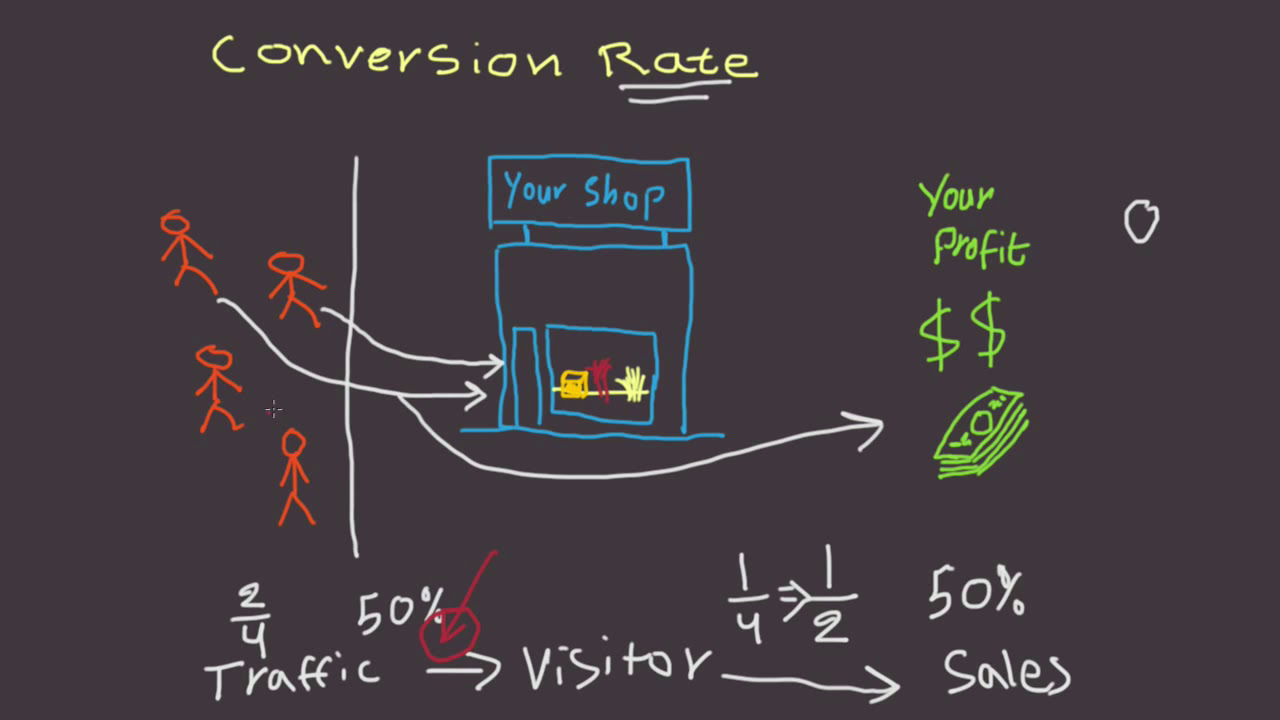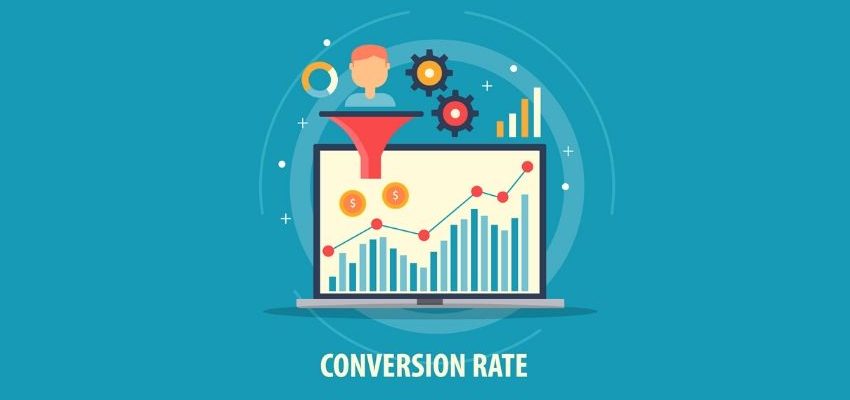As a businessowner or marketer, you may have heard the term "conversion rate" before. But what exactly does it mean, and how can you calculate it? Let's also know what is conversion rate.
In this article, we will answer these questions and provide you with a better understanding of conversion rates.
What Is Conversion Rate?

What is Conversion Rate?
Conversion rate is the percentage of website visitors who complete a desired action, such as making a purchase, filling out a form, or subscribing to a newsletter.
In other words, it's the rate at which visitors convert from just browsing your website to taking a specific action that you want them to take.
A high conversion rate indicates that your website is effective in convincing visitors to take action, while a low conversion rate suggests that there may be issues with your website or marketing strategies.
How To Calculate Conversion Rate?
Calculating your conversion rate is relatively straightforward. All you need to do is divide the number of conversions by the number of visitors to your website and multiply by 100 to get a percentage. The formula is:
Conversion rate = (Number of conversions / Number of website visitors) x 100
For example, let's say your website had 10,000 visitors last month, and 500 of them made a purchase. Your conversion rate would be:
Conversion rate = (500 / 10,000) x 100 = 5%
Why Is Conversion Rate Important?
Conversion rate is an essential metric for measuring the success of your website and marketing efforts. A high conversion rate means that you're effectively reaching and engaging your target audience and that your website is optimized for conversions.
On the other hand, a low conversion rate indicates that you may need to make some changes to your website or marketing strategies to improve your results.
Additionally, monitoring your conversion rate over time can help you identify trends and make data-driven decisions to improve your website's performance.
For example, if you notice that your conversion rate is dropping, you can investigate the potential causes and make adjustments to your website or marketing strategies to address the issue.
Factors That Affect Conversion Rate
Several factors can impact your website's conversion rate. Here are some of the most common ones:
- User Experience- The user experience of your website plays a significant role in determining your conversion rate. If your website is slow, difficult to navigate, or doesn't look professional, visitors are less likely to trust your brand and take the desired action.
- Website Design- Your website's design can also impact your conversion rate. A clean, modern, and visually appealing design can help build trust with visitors and encourage them to take action.
- Target Audience- Understanding your target audience and tailoring your website and marketing strategies to their needs and preferences can help increase your conversion rate.
- Value Proposition- Your value proposition, or the unique benefits that your product or service provides, can also impact your conversion rate. If visitors don't see the value in what you're offering, they're less likely to take action.
- Call To Action- Your call to action, or the message and button that encourage visitors to take the desired action, is crucial in driving conversions. A clear, compelling call to action can significantly impact your conversion rate.
Common Mistakes That Hurt Your Conversion Rate
As we've previously discussed, the conversion rate is a critical metric for measuring the success of your website and marketing efforts. However, there are several common mistakes that can negatively impact your conversion rate.
In this part, we'll explore these mistakes and provide tips on how toavoid them.
1. Having A Complicated Or Confusing User Experience
One of the most significant mistakes that can hurt your conversion rate is having a complicated or confusing user experience. If your website is challenging to navigate, has slow load times, or doesn't look professional, visitors are less likely to trust your brand and take the desired action.
To avoid this mistake, focus on creating a clean and straightforward user experience that's easy to navigate and provides a clear path to conversion.
2. Failing To Understand Your Target Audience
Another common mistake that can hurt your conversion rate is failing to understand your target audience. If you're not tailoring your website and marketing strategies to their needs and preferences, you're less likely to engage them and convince them to take action.
To avoid this mistake, invest time in researching and understanding your target audience, including their pain points, interests, and behaviors. Use this information to tailor your messaging and offers to their needs and preferences.
3. Neglecting Your Website Design
Your website's design can significantly impact your conversion rate. If your website looks outdated or unprofessional, visitors are less likely to trust your brand and take the desired action.
To avoid this mistake, invest in creating a visually appealing and modern website design that's consistent with your brand's identity and values.
4. Having A Weak Or Unclear Value Proposition
Your value proposition, or the unique benefits that your product or service provides, can significantly impact your conversion rate. If visitors don't see the value in what you're offering, they're less likely to take action.
To avoid this mistake, focus on creating a clear and compelling value proposition that resonates with your target audience and sets you apart from your competitors.
5. Ignoring Your Call To Action
Finally, ignoring your call to action can significantly hurt your conversion rate. If your call to action is weak or unclear, visitors may not understand what action to take or why they should take it.
To avoid this mistake, create a clear and compelling call to action that's prominently displayed on your website and aligns with your overall messaging and goals.
People Also Ask
What Is A Good Conversion Rate For E-commerce?
A good conversion rate for e-commerce can vary depending on the industry, product, and website. However, a general benchmark is a conversion rate of around 2% to 3%. Anything above 3% is considered a good conversion rate, while anything below 2% may indicate that there are areas for improvement in your website and marketing strategies.
How Can I Increase My Conversion Rate?
There are several ways to increase your conversion rate, including improving your website's user experience, tailoring your messaging and offers to your target audience, investing in website design, creating a clear and compelling value proposition, and optimizing your call to action. Conducting A/B testing can also help identify which strategies are most effective for increasing your conversion rate.
What Is Conversion Rate Optimization?
Conversion rate optimization (CRO) is the process of improving your website and marketing strategies to increase the percentage of visitors who take a desired action, such as making a purchase or filling out a form. CRO involves analyzing data, identifying areas for improvement, and implementing changes to improve the user experience, increase trust and credibility, and make it easier for visitors to take the desired action. CRO can lead to increased conversion rates, higher customer satisfaction, and ultimately, improved businesssuccess.
Conclusion
Conversion rate is a crucial metric for measuring the success of your website and marketing efforts. By understanding what it is, how to calculate it, and the factors that affect it, you can make data-driven decisions to optimize your website and improve your results.
Remember to regularly monitor your conversion rate and make adjustments as needed to ensure that your website is always performing at its best.


